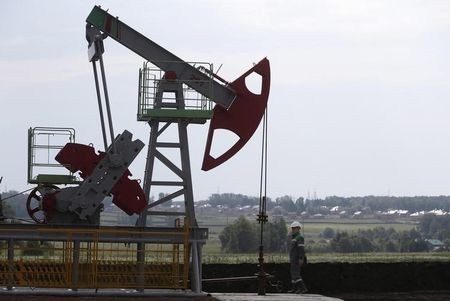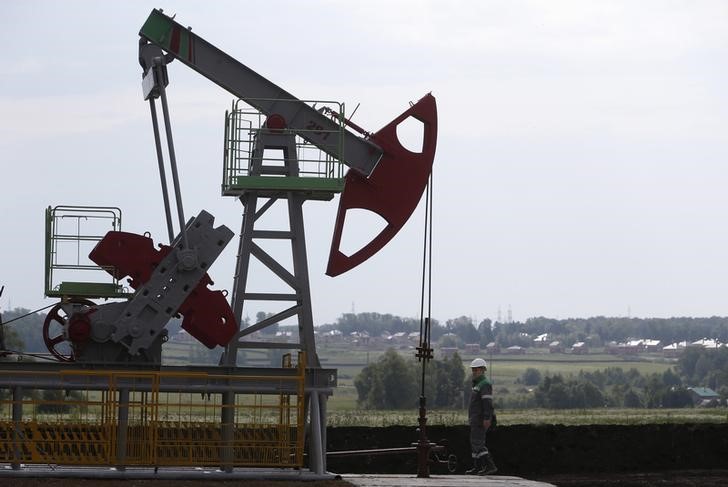Commodities
Oil prices extend gains amid Libya disruptions, mixed US inventory data


© Reuters.
Investing.com– Oil prices rose slightly in Asian trade on Thursday, extending strong gains from the prior session as the shutdown of Libya’s biggest oilfield fueled more concerns over tight supplies.
The shutdown came amid continued disruptions to shipping activity in the Red Sea, which markets feared could disrupt global oil supplies. The Israel-Hamas war also now appeared to have spilled over into Lebanon, marking an escalation in the conflict.
Disruptions to Middle Eastern crude supply were a key point of support for oil prices in recent sessions, particularly on the grounds that they could result in tighter global oil markets in 2024.
Expectations of tighter supplies were further fueled by industry data showing a substantially bigger-than-expected draw in U.S. inventories over the final week of 2023. But the data also showed an outsized build in gasoline and distillate stocks, indicating that U.S. fuel demand remained weak.
expiring in March rose 0.3% to $78.47 a barrel, while rose 0.5% to $73.20 a barrel by 20:10 ET (01:10 GMT).
Both contracts surged around 3% on Wednesday, following news of the Libyan shutdown. Protests over high fuel prices caused Libya’s El Sahara oil field to halt production, with the field producing about 300,000 barrels per day.
US inventories shrink more than expected, but fuel demand seen weak- API
Data from the American Petroleum Institute (API) showed that U.S. fell by 7.4 million barrels in the week to December 29, far more than expectations for a draw of about 3 million barrels.
But the API data also showed an over 6 million barrel build in gasoline and distillate inventories, suggesting that demand in the world’s biggest fuel consumer remained weak at the end of 2023.
While a bulk of this slowdown can be attributed to weak seasonal trends- particularly the winter season dissuading road travel, a mix of high interest rates and cooling economic activity may also be weighing on fuel demand.
The API data usually heralds a similar reading from , which is due later on Thursday.
Despite strong gains on Wednesday, oil prices were still nursing steep losses in 2023. and WTI lost over 10% apiece in the past year on growing fears of a demand slowdown, particularly due to economic pressure from high interest rates.
Purchasing managers index (PMI) data released on Wednesday showed a sustained contraction in U.S. . Crude prices had also marked a weak start to 2024 following dismal PMI data from top importer China.
Despite Wednesday’s bounce, further gains in oil were held back by a sharp recovery in the , as markets awaited fresh cues on monetary policy from data due this Friday. Some doubts over the timing of U.S. interest rates also appeared to be creeping into markets, with the providing few cues.
Upgrade your investing with our groundbreaking, AI-powered InvestingPro+ stock picks. Use coupon INVSPRO2024 to avail a limited time discount on our Pro and Pro+ subscription plans. Click here to know more, and don’t forget to use the discount code when checking out!
Commodities
Oil prices rise; U.S. crude inventories plunge, Russia-Ukraine truce eyed
Commodities
India’s Reliance to stop buying Venezuelan oil over US tariffs, sources say
Commodities
Oil prices climb on Venezuela supply worries

 Forex3 years ago
Forex3 years agoForex Today: the dollar is gaining strength amid gloomy sentiment at the start of the Fed’s week

 Forex3 years ago
Forex3 years agoUnbiased review of Pocket Option broker

 Forex3 years ago
Forex3 years agoDollar to pound sterling exchange rate today: Pound plummeted to its lowest since 1985

 Forex3 years ago
Forex3 years agoHow is the Australian dollar doing today?

 Cryptocurrency3 years ago
Cryptocurrency3 years agoWhat happened in the crypto market – current events today

 World3 years ago
World3 years agoWhy are modern video games an art form?

 Commodities3 years ago
Commodities3 years agoCopper continues to fall in price on expectations of lower demand in China

 Economy3 years ago
Economy3 years agoCrude oil tankers double in price due to EU anti-Russian sanctions























